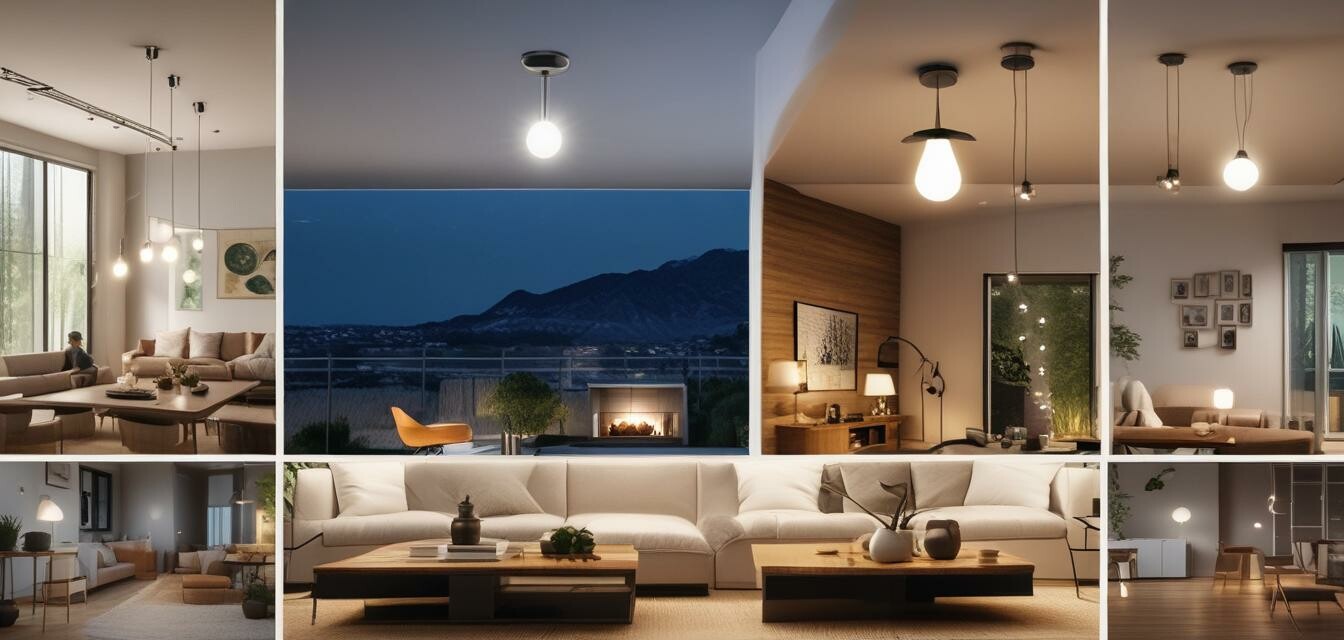
Guide to Energy-Efficient Lighting Solutions
Key Takeaways
- Energy-efficient lighting options yield long-term savings.
- LED and CFL bulbs are the most common energy-efficient alternatives.
- Smart lighting systems also optimize energy usage.
- Consider the color temperature and lumens when choosing lighting.
- Proper installation and maintenance can enhance efficiency.
Choosing the right lighting solutions is essential for both professionals and DIY enthusiasts. With increasing energy costs and a growing emphasis on sustainability, opting for energy-efficient options is a smart choice. In this guide, we will delve into various energy-efficient lighting technologies, providing insights on how to select the best options for long-term savings and optimal performance. Let's explore the options that can drastically lower electricity usage while still providing adequate illumination.
Types of Energy-Efficient Lighting
When it comes to energy-efficient lighting solutions, there are several options available. Below are some of the most common types:
| Type | Description | Benefits |
|---|---|---|
| LED Bulbs | Light Emitting Diodes that are highly energy-efficient. |
|
| CFL Bulbs | Compact Fluorescent Lamps that use less electricity than incandescent bulbs. |
|
| Halogen Bulbs | Incandescent bulbs with a halogen gas for greater energy efficiency. |
|
| Smart Lighting | Connected lighting that can be controlled via apps or home automation systems. |
|
| Solar Lights | Outdoor lighting that uses solar panels to harness energy from the sun. |
|
Understanding Lumens and Color Temperature
When selecting energy-efficient lighting, it is crucial to consider lumens and color temperature:
- Lumens: This measures the brightness of a bulb. The higher the lumens, the brighter the light. For instance, a standard 60-watt incandescent bulb produces around 800 lumens.
- Color Temperature: Measured in Kelvins (K), this dictates the color of the light emitted. Here's a brief guide:
- Warm White (2700K-3000K): Cozy and inviting, ideal for living areas.
- Cool White (3500K-4100K): More neutral, great for kitchens and workspaces.
- Daylight (5000K-6500K): Bright and natural, perfect for areas that require focused lighting.
Advantages of Energy-Efficient Lighting
Switching to energy-efficient lighting can offer numerous advantages. Here are just a few:
Pros
- Significant reduction in electricity bills.
- Longer lifespan for bulbs reduces replacement costs.
- Environmentally friendly options reduce carbon footprint.
- Available in various styles to fit any décor.
Cons
- Higher upfront costs for certain types of lighting.
- Compatibility issues with existing fixtures.
- Some may require specific dimmer switches.
Installation and Maintenance Tips
Proper installation and maintenance are crucial to maximizing the efficiency of your lighting solutions. Here are some tips:
- Ensure fixtures are compatible with the chosen bulbs.
- Consider energy-saving settings or timers for smart lighting.
- Regularly clean fixtures and bulbs to maintain light output.
- Replace burnt-out bulbs promptly to avoid reduced efficiency.
Featured Product: iPlusmile 400 Pcs Wire Protector
When managing lighting systems, proper cord organization is key. This product supports efficiency and safety. Check out the features below:
iPlusmile 400 Pcs Wire Protector
This set of cable strain relief connectors is perfect for maintaining organized and safe wiring systems for your lighting projects.
Learn MoreConclusion
Choosing the right energy-efficient lighting solutions can make a significant impact on your energy consumption and overall costs. Whether you opt for LED bulbs, smart lighting, or solar options, the key is to understand your needs and make informed decisions. By selecting high-quality products and ensuring proper installation, you can contribute to a more sustainable future while enjoying long-term savings.
For more resources on energy-saving products, check out our guides on Industrial lighting, EV chargers, and tools and accessory kits.
